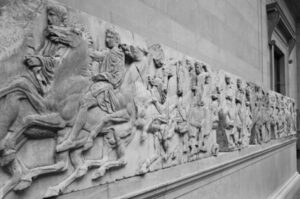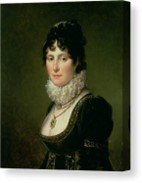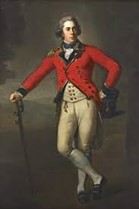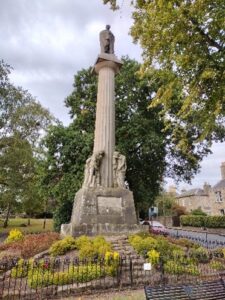Presented by Ailsa Fortune
September 2023 –

At a significant time in the saga of the ‘Elgin’ marbles when the Greek government has, recently, again requested the return of the marbles to their homeland, Ailsa Fortune’s talk had an immediate relevance. Ailsa raised the curtain on the complex and somewhat predatory goings on in the early 19th century which resulted in what many call the plunder of the marbles from the Parthenon, and the financial, social and political cost arising for the perpetrators. Some might think the excuse that these magnificent ancient Greek sculptures were being saved for humanity from uncaring destruction by the Ottomans is risible. Perhaps the considerable damage to the Parthenon caused by the explosion in 1687 of a Turkish gunpowder store within, as they defended the city against the Venetians, provided a justification. Controversial as the matter is today, at the time there was anger even in British society over the presumption of the Earl of Elgin, not the least of which was expressed by the ‘mad, bad and dangerous to know’ Lord Byron.
Mary Nisbet of Dirleton played a major role in the procurement of the marbles. Mary was born into the immensely wealthy Nisbet family in 1778, spending her childhood at Archerfield. A precocious and intelligent child, she grew into a very pretty, accomplished and competent young woman. Portraits of the time attest to her beauty.

Her father was William Nisbet, the extremely wealthy head of one of the richest families in Scotland. However, he had no title and may have sought to elevate the family status by marrying off his only child to a suitable aristo. Into the frame in 1798 stepped Thomas Bruce of Broomhall, Fife, 7th Earl of Elgin. He offered the aristocratic connection and she offered the considerable dowry for which the profligate Elgin had an unmet need.

With the imminence of a departure to Constantinople as Ambassador to the Ottoman Empire, after a courtship of only 4 months and despite a last minute panic by Mary when she fled the ceremony, they married in 1799. In September of that year, they sailed for Constantinople in HMS Phaeton. Mary bore the 2 month voyage perhaps stoically, considering that she suffered from sea sickness, supplemented by morning sickness arising from her pregnancy. Her first child, George, was born the following year.
In residence, the Elgins were overwhelmed by the sheer opulence of the Ottoman court. To match this, the ambassador and his wife perforce had to entertain in a similarly extravagant way. Much draining of private coffers ensued to supplement the limited salary provided by the British government. A difficulty for Mary arose from the many beautiful and expensive gifts showered on her by the Turks. How to reciprocate with limited funds? Here Mary’s cleverness and resourcefulness saved the day. She had her expensive presents shipped back ostensibly to her home in London, but secretly had them sold. She used the proceeds to help fund lavish gifts for Turkish dignitaries.
Thomas Harrison, the Elgin’s architect, had requested drawings and plaster casts of the Parthenon sculptures which would inform the classical redesign of Elgin’s residence at Broomhall. Lord Elgin approached a young JMW Turner to be the artist for the project but failed to persuade him, not least because he (Elgin) wished to retain full ownership of any drawings. In the end a mediocre Italian artist took the job. By the time of his arrival in Constantinople, Elgin had become fixated on obtaining the real thing, rather than just drawings and plaster casts. A special permit (firman) from the Sultan was required for the removal and export of any antiquities. Elgin’s firman allegedly gave him permission to draw, model and take away some (or a few) pieces on the ground, but not to remove those still in place in the Parthenon itself. Elgin’s workers erected scaffolding ostensibly to allow the in-situ pieces to be drawn and modelled, but instead, amid suggestions that the Turks were continuing to vandalise the building and with the payment of customary bribes, removed many of the sculptures causing further damage to the pediment as they did so.
Mary’s enthusiasm for the marbles matched those of her husband. She was left in charge of matters in Athens when her husband returned to other duties, having the responsibility to box up 5 crates of marbles for shipment. She added a further 3 crates on her own initiative. The 8 were loaded on to a Royal Navy ship for transfer to Elgin’s hired merchantman lying off shore. The overloaded transport sank early in the voyage back to London, a salvage operation then adding hugely to the expense of the project. The whole enterprise had so far cost the Elgins immense sums, much of which they borrowed from the Nisbets.
With the end of the posting to Constantinople in 1804 the Earl and Countess intended to travel home through Europe. Unfortunately, the Napoleonic wars reignited when they were in France and Elgin was placed under house arrest. Mary was free to roam within limits, accompanied by the family friend Robert Ferguson of Raith. At this time Mary gave birth again but the baby died. Later, pregnant again, she obtained permission to return to London. By this time Mary was disillusioned and fed up with her profligate and, it seems, syphilitic husband. She began an affair with Ferguson. Elgin, meanwhile, agreed parole conditions with the French which allowed him to return to England. There in 1806 he brought a law suit against Ferguson and the English courts awarded him £10,000 damages. He brought a case for divorce to Edinburgh the success of which cost Mary the custody of her children (her son and two daughters). This was bad enough, but the salacious gossip surrounding the whole business must have been very hurtful and socially very damaging. In due course, however, Mary and Ferguson married and settled in Archerfield where they became very popular with the tenantry (as witnessed by the statue of Ferguson in Memorial Park opposite the West Church in Haddington).

Elgin tried everything to show the marbles privately but eventually gave up and sold them to the British Museum for £35 000, thus recovering about half of his investment. Keen to squeeze more money from Mary, no doubt in part to pay off his debts, he brought another court case against her, suing for £200 000. The case was thrown out and Elgin fled to France where he lived until his death in 1841. He was pre-deceased by his eldest son, George. Robert Ferguson and Mary had no children together. Robert died in 1840 and Mary in 1855.
Peter Ramage

You must be logged in to post a comment.